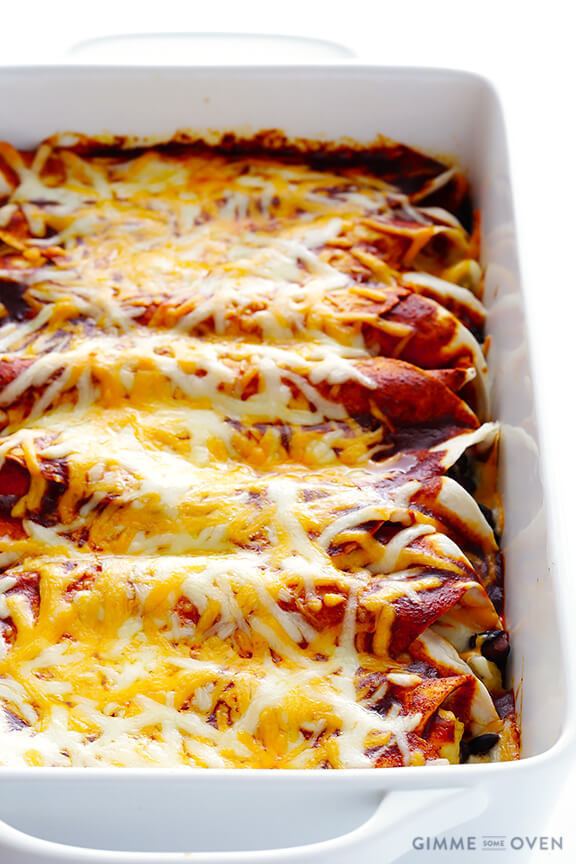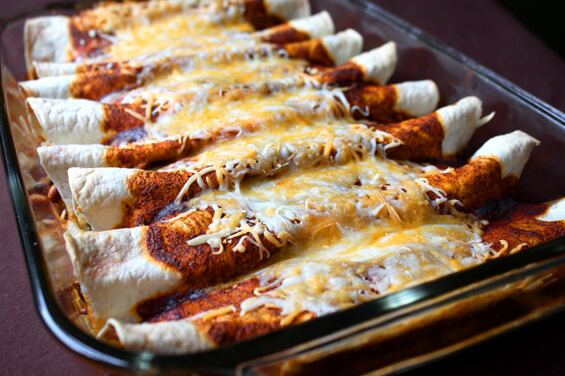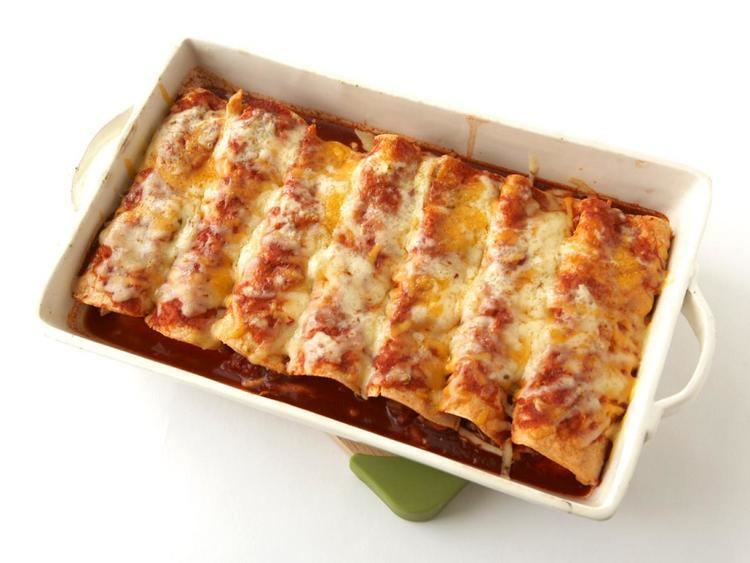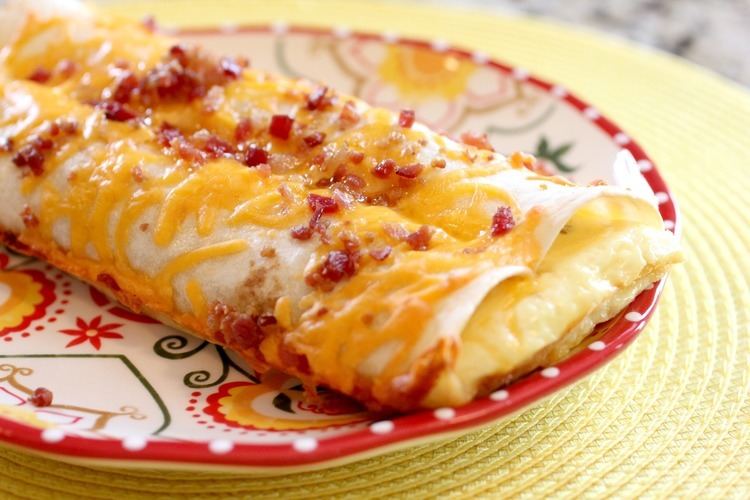 | ||
Similar Quesadilla, Burrito, Fajita, Taco, Wheat tortilla | ||
Vegetarian enchiladas
An enchilada (/ˌɛntʃᵻˈlɑːdə/, [entʃiˈlaða]) is a corn tortilla rolled around a filling and covered with a chili pepper sauce. Enchiladas can be filled with a variety of ingredients, including meat, cheese, beans, potatoes, vegetables or combinations.
Contents
- Vegetarian enchiladas
- Vegetarian enchiladas mexican cuisine by manjula
- Etymology
- History
- Varieties
- Fillings toppings and garnishes
- References
Vegetarian enchiladas mexican cuisine by manjula
Etymology

The Real Academia Española defines the word enchilada, as used in Mexico, as a rolled maize tortilla stuffed with meat and covered with a tomato and chili sauce. Enchilada is the past participle of Spanish enchilar, "to add chili pepper to", literally to "season (or decorate) with chili".
The idiomatic English phrase "the whole enchilada" means "the whole thing".
History

Enchiladas originated in Mexico, where the practice of rolling tortillas around other food dates back at least to Mayan times. The people living in the lake region of the Valley of Mexico traditionally ate corn tortillas folded or rolled around small fish. Writing at the time of the Spanish conquistadors, Bernal Díaz del Castillo documented a feast enjoyed by Europeans hosted by Hernán Cortés in Coyoacán, which included foods served in corn tortillas. (Note that the native Nahuatl name for the flat corn bread used was tlaxcalli; the Spanish give it the name tortilla.) The Nahuatl word for enchilada is chīllapītzalli [t͡ʃiːlːapiːˈt͡salːi] which is formed of the Nahuatl word for "chili", chīlli [ˈt͡ʃiːlːi] and the Nahuatl word for "flute", tlapītzalli [t͡ɬapiːˈt͡salːi]. In the 19th century, as Mexican cuisine was being memorialized, enchiladas were mentioned in the first Mexican cookbook, El cocinero mexicano ("The Mexican Chef"), published in 1831, and in Mariano Galvan Rivera's Diccionario de Cocina, published in 1845.

Mexican cooking authority Diana Kennedy cites an early reference from an American traveler from 1883 who remarked, "Enchiladas, a greasy tortilla sandwich containing chiles and a number of other uninviting looking compounds and other nasty messes, are sold everywhere, filling the air with a pungent, nauseous smell." Kennedy goes on to heartily disagree with that characterization, likely brought on by culture shock. Another early mention, in English, is a 1914 recipe found in California Mexican-Spanish Cookbook, by Bertha Haffner Ginger.
Varieties

In their original form as Mexican street food, enchiladas were simply corn tortillas dipped in chili sauce and eaten without fillings. There are now many varieties, which are distinguished primarily by their sauces, fillings and, in one instance, by their form. Various adjectives may be used to describe the recipe content or origin, e.g. enchilada tapatia would be a recipe from Jalisco.
Varieties include:

Fillings, toppings and garnishes
Fillings include meat (e.g. beef, poultry, pork, seafood) or cheese, potatoes, vegetables, and any combination of these. Enchiladas are commonly topped or garnished with cheese, sour cream, lettuce, olives, chopped onions, chili peppers, salsa, or fresh cilantro.
